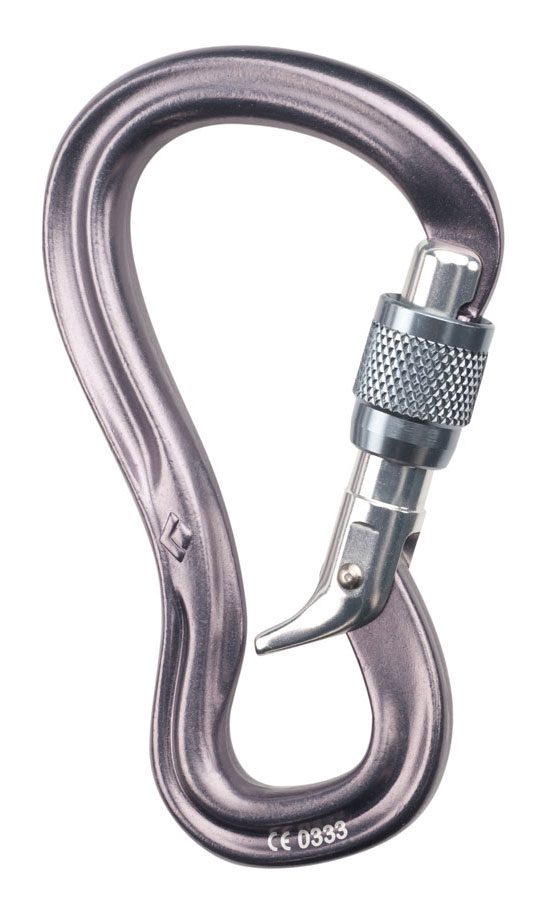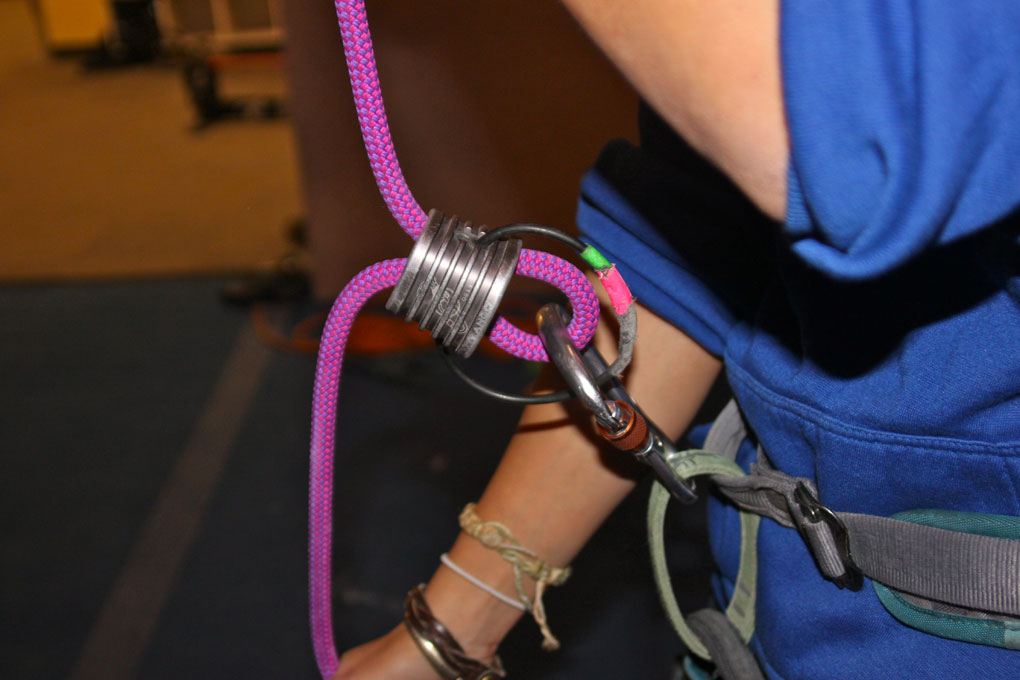 Black Diamond GridLock Screwgate Carabiner
Black Diamond GridLock Screwgate Carabiner
Weight: 76 g / 2.7 oz.
Closed Gate Strength: 22 kN / 4,946 lb./ft.
Open Gate Strength: 8 kN / 1,798 lb./ft.
Minor Axis Strength: 7 kN / 1,574 lb./ft.
Gate Opening: 21 mm / 0.83 in
Time Tested: One month
Locations Tested: Turkey Rocks, Shelf Road, Colorado; Indian Creek, Utah; the gym
Every year, climbing companies come out with new gear, and we’re always looking forward to new features that make our gear safer or easier to use (and often, just plain cooler). Some of these changes have been long lasting, like sticky rubber and harnesses with padded leg loops. Others have been passing fads, particularly the Lycra of the ‘80s.
But what happens when we run out of advances? In some areas it seems as if we’ve maxed out our potential for new technology. Carabiner design in particular really hasn’t advanced much in the last several years. It almost seemed that we’d finally hit our wall.
But last year, Climbing magazine doled out the famed Editor’s Choice award to…a carabiner?
After years of status quo clipping, Black Diamond came out with the GridLock Screwgate, a funky, 8-shaped ‘biner with a tab that separates the belay device and harness belay loop when giving catches.
Black Diamond designed the GridLock specifically to eliminate cross-loading while belaying, which occurs when the carabiner is pulled or loaded width-wise (across the gate) instead of length-wise. A standard carabiner is generally oblong, a shape designed to hold heavy loads by dispersing the force and weight along the carabiner’s long edge or “spine.” This is extremely effective—carabiners can hold upward of 25 kN (~5,000 lb./ft.) when loaded lengthwise. But when loaded width-wise, they can only hold about a third as much force.
I was very curious to test out their new technology to see how worthwhile the design really was. Although I recognize the danger of cross-loading, I have only rarely encountered it in my climbing. And whenever I have cross-loaded my belay ‘biner, it’s only taken a second or two to fix.
In testing this carabiner, I became acutely aware of all the little ticks and quirks that accompany my belay set-up. When I get ready to belay, I have a seven-year-old habit that involves a very quick, smooth clip onto my harness after feeding a bight of rope into my ATC. I almost always clip in the same direction, and then tighten down the screw gate of my carabiner with my right hand.

When I started using the gridlock, this whole process had to happen in two parts: first I clipped everything to my harness, and then I had to re-open the gate to fit the belay loop of my harness behind the carabiner’s segregating tab. I would never have thought that this change in setup would annoy me so much—it’s such a trivial thing to change. But when you’ve created habits to ensure your system’s safety, it feels surprisingly strange to change them suddenly.

Why does this article start off with, “Once I was actually belaying, however, I didn’t notice the inconvenience at all.”? It’s like it’s a continuation of another article.
Also, it says, “It is very easy to get the Gri-Gri’s tight belay loop stuck next to the tab…”
The grigri has a belay loop?
It doesn’t you’re on the second page of the article. (Also, just in case you missed it, we published this review 12 years ago….)